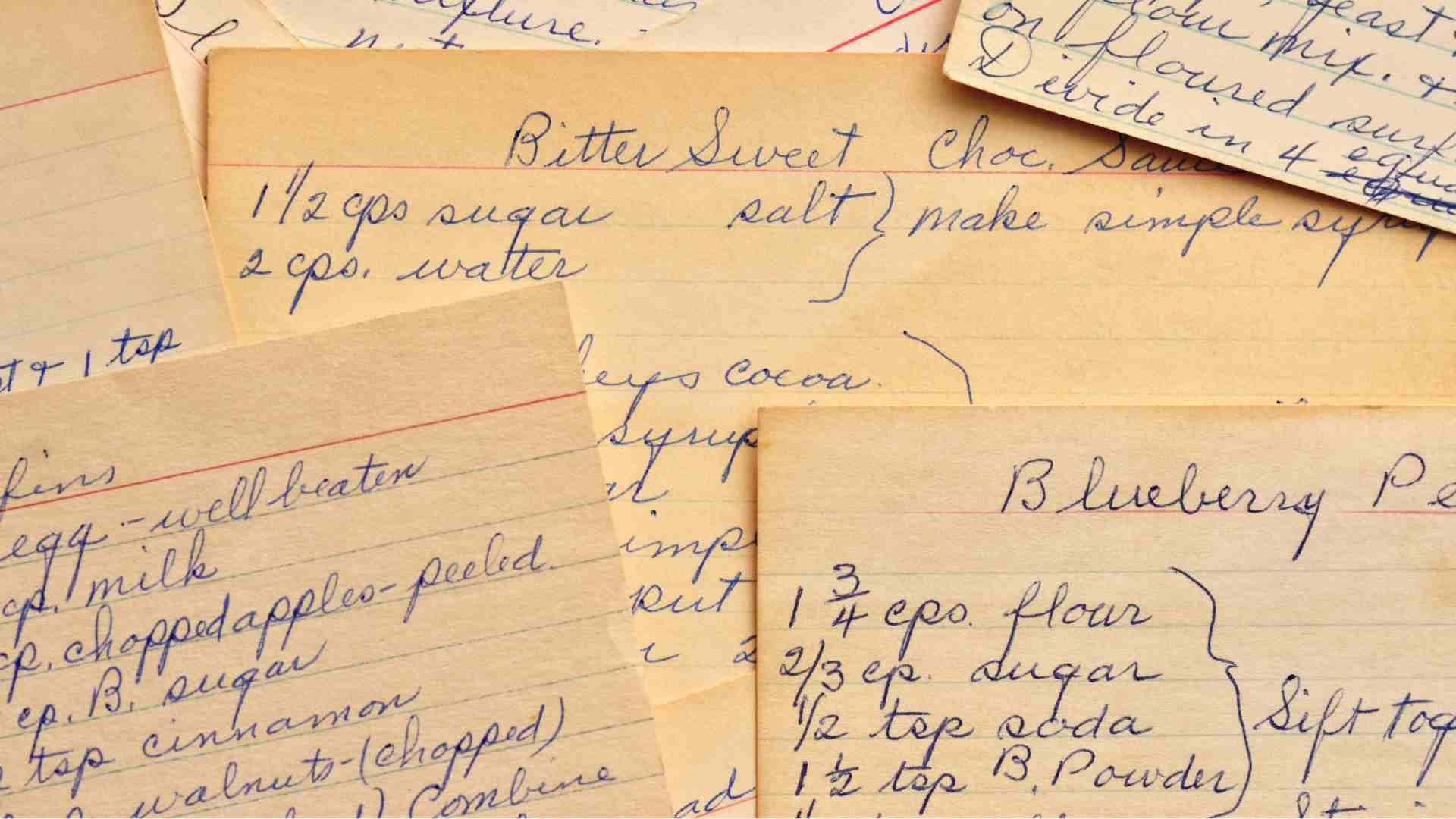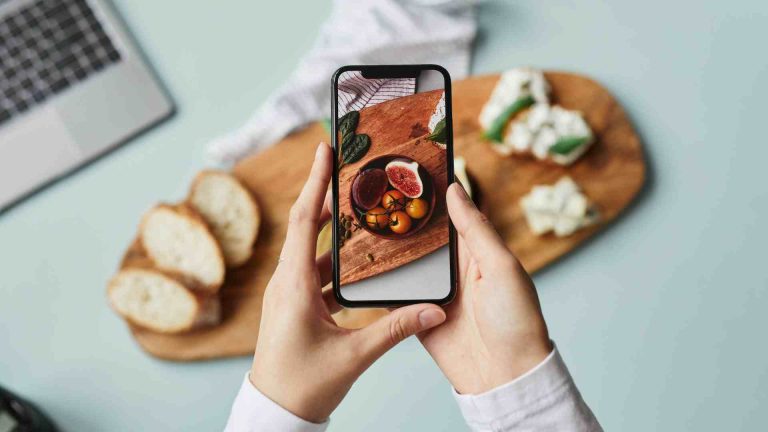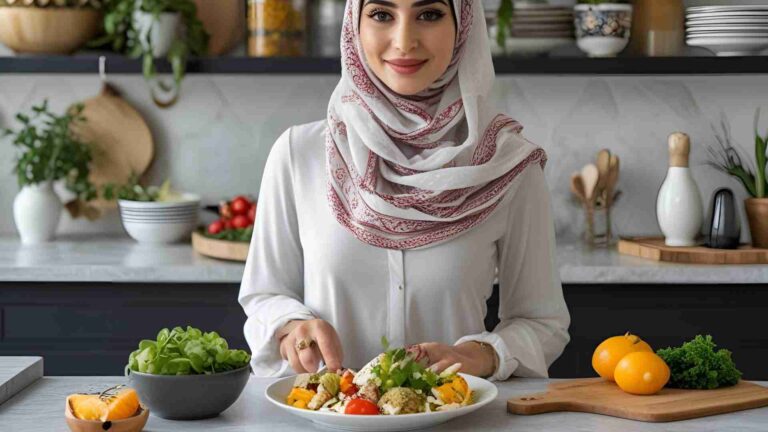How to Make Recipe Cards and Free Templates
Recipe cards are more than just a way to jot down ingredients and instructions—they’re a bridge between generations, a tool for preserving culinary traditions, and a practical asset for home cooks and professional kitchens alike. Whether you’re safeguarding your grandmother’s secret cookie recipe or standardizing dishes for a restaurant, creating well-designed recipe cards can bring order to your kitchen and joy to your cooking. This comprehensive guide will walk you through everything you need to know about making recipe cards, including step-by-step instructions, free templates, digital tools, and expert tips to ensure your cards are both functional and beautiful. We’ll also explore user reviews of popular tools and platforms to help you choose the best options for your needs.
What Are Recipe Cards and Why Are They Important?
A recipe card is a compact, organized document that records the essentials of a dish: the ingredients, preparation steps, serving size, and sometimes additional notes like cooking tips or allergen information. Typically sized at 3×5 inches, 4×6 inches, or 5×7 inches, recipe cards are designed for easy storage in boxes, binders, or digital platforms. Beyond their utility, recipe cards carry emotional weight—they’re often heirlooms, stained with flour and love, passed down through families or shared among friends.
Why You Should Use Recipe Cards
- Preserve Family Traditions: Recipes are a cornerstone of cultural and familial identity. A recipe card ensures that your great-aunt’s lasagna or your dad’s barbecue sauce lives on for future generations.
- Maintain Consistency: For home cooks, recipe cards help replicate favorite dishes perfectly every time. In professional kitchens, they ensure uniformity across staff and locations.
- Organize Your Kitchen: A collection of recipe cards, whether physical or digital, keeps your culinary repertoire tidy and accessible.
- Enhance Food Safety: Detailed cards can include critical safety information, like cooking temperatures or allergen warnings, reducing the risk of errors.
- Streamline Training: In restaurants, recipe cards are invaluable for onboarding new staff, providing clear instructions to maintain quality standards.
- Boost Efficiency: By listing exact measurements and steps, recipe cards help avoid waste and overbuying ingredients, saving time and money.
Step-by-Step Guide to Making Recipe Cards
Creating recipe cards involves three main steps: choosing the right cards, designing them, and printing or digitizing them. Below, we break down each step with practical advice and tools to make the process seamless.
Step 1: Choose the Best Cards for Recipes
The foundation of a great recipe card is selecting the right size and material. This decision depends on how you plan to store and use your cards.
Best Sizes for Recipe Cards
Recipe cards come in three standard sizes, each suited to different storage methods:
- 3×5 Inches (Traditional): Ideal for vintage recipe boxes, these compact cards are perfect for those who love a nostalgic touch. However, they offer limited space for detailed instructions.
- 4×6 Inches (Modern): The most popular size today, 4×6 cards fit perfectly in photo-sized sheet protectors, making them ideal for binders. They balance space and portability.
- 5×7 Inches (Oversized): These larger cards are great for complex recipes or visually rich designs. They fit in A5 binders with single-card sheet protectors, offering ample room for notes and images.
Table: Recipe Card Sizes and Storage Options
| Size | Best For | Storage Options | Pros | Cons |
|---|---|---|---|---|
| 3×5 Inches | Vintage recipe boxes | Recipe boxes, small binders | Compact, nostalgic | Limited space for details |
| 4×6 Inches | Modern binders | Photo sheet protectors, binders | Versatile, widely compatible | Slightly larger than traditional |
| 5×7 Inches | Detailed recipes, visual designs | A5 binders, single-card protectors | Ample space, professional look | Bulkier, less common |
Best Materials for Recipe Cards
The material of your recipe card affects its durability and compatibility with your printer:
- Cardstock: Thicker than regular paper, cardstock is sturdy and withstands kitchen spills better. Look for weights between 65-110 lb for optimal durability.
- Printer Compatibility: Ensure the cardstock matches your printer type—laser printers require laser-compatible cards, while inkjet printers need inkjet-compatible ones. Mismatched materials can cause smearing or damage.
- Laminated Options: For extra protection, consider laminating printed cards or using pre-laminated cardstock, especially for cards used frequently in busy kitchens.
Pro Tip: If you’re printing at home, check your printer’s manual for maximum paper thickness. Most consumer printers handle cardstock up to 80 lb without issue.
Step 2: Design Your Recipe Cards
Designing a recipe card is where creativity meets functionality. Whether you prefer a minimalist look or a vibrant, photo-filled design, the right tools can make the process intuitive and fun.
Key Elements of a Recipe Card
A well-designed recipe card includes:
- Recipe Title: Clear and descriptive (e.g., “Grandma’s Chocolate Chip Cookies”).
- Ingredients List: Precise measurements and order of use.
- Preparation Instructions: Step-by-step, concise directions.
- Serving Size/Yield: Number of portions or batch size.
- Prep and Cooking Time: Total time required.
- Optional Extras:
- Images: A photo of the finished dish for visual guidance.
- Special Notes: Allergen info, substitutions, or plating tips.
- Storage Instructions: How to store leftovers safely.
- Costing: Ingredient costs for professional use.
Tools for Designing Recipe Cards
Several platforms offer free or affordable tools to create stunning recipe cards. Here are the top options:
1. Avery Design and Print Online (ADPO):
- Overview: A free, cloud-based tool for designing cards, labels, and more. No download required.
-
Features:
- Pre-designed templates for 3×5, 4×6, and 5×7 cards.
- Customizable fonts, colors, and layouts.
- Ability to save and share designs.
- Compatible with Avery’s printable cardstock.
- Best For: Home cooks and small businesses looking for professional results without complex software.
- User Review: “ADPO is a lifesaver for organizing my family recipes. The templates are easy to edit, and I love that I can save my designs for later.” – Sarah M., home cook.
2. Canva:
- Overview: A versatile design platform with free and premium recipe card templates.
-
Features:
- Drag-and-drop interface.
- Extensive library of free images, fonts, and graphics.
- Options to save as PDF, JPEG, or PNG.
- Collaborative editing for sharing with family or colleagues.
- Best For: Creative types who want visually striking cards with minimal effort.
- Pricing: Free plan available; Pro plan ($12.99/month) unlocks premium templates.
- User Review: “Canva makes my recipe cards look like they belong in a cookbook. I uploaded my own photos, and the results were gorgeous!” – Emily R., food blogger.
3. FoodDocs Recipe Card Maker:
- Overview: A free tool designed for food businesses to create digital and printable recipe cards.
-
Features:
- Editable templates with fields for ingredients, instructions, and images.
- Supports Imperial and Metric units.
- Downloadable as PDF for free.
- Integrates with food safety and production planning tools.
- Best For: Restaurants and commercial kitchens needing standardized, digital recipes.
- User Review: “This tool streamlined our kitchen operations. We digitized all our recipes in a day, and the cards are so easy to update.” – Mark T., restaurant owner.
4. Tasty Recipes (WordPress Plugin):
- Overview: A plugin for food bloggers to create print-friendly recipe cards on WordPress sites.
-
Features:
- Automatic print buttons for readers.
- Customizable templates to match blog branding.
- Jump-to-recipe and Pinterest-sharing options.
- Nutrition facts integration.
- Best For: Food bloggers monetizing their sites or engaging readers with printable content.
- Pricing: $49/year for a single site.
- User Review: “Tasty Recipes saved me hours of design work. My readers love the print button, and it’s boosted my blog’s engagement.” – Laura K., food blogger.
| Tool | Features | Price |
|---|---|---|
| Canva | Drag-and-drop editor, free templates | Free (Premium: $12.99/mo) |
| Avery Design & Print | Pre-sized templates, cloud saving | Free |
| Tasty Recipes (WordPress Plugin) | SEO-friendly, print buttons | $99/year |
| RecipesGenerator.com | Adjustable servings, nutrition facts | 5−5−15/mo |
Step-by-Step Instructions for Designing in ADPO
Here’s how to create a recipe card using Avery’s free tool, which is beginner-friendly and widely accessible:
- Select a Template: Open ADPO and search for recipe card templates by size (e.g., 5388 for 3×5 cards). Click “Customize” to start editing.
- Edit Text: Click any text box to change the placeholder text. Adjust font, size, color, or alignment using the side menu.
- Resize Elements: Drag text box borders to fit longer instructions or ingredient lists.
- Add Images: Upload a photo of your dish or choose from Avery’s gallery. Resize and position as needed.
- Personalize Design: Move design elements like borders or icons to suit your style.
- Edit Individual Cards: Use “Edit One” mode to customize specific cards or “Edit All” for uniform changes.
- Save Your Project: Click the save icon, name your project, and store it in your Avery account for future access.
Pro Tip: Save your design as a template to reuse across multiple recipes, ensuring a cohesive look for your collection.
Step 3: Print or Digitize Your Recipe Cards
Once your design is complete, you have two options: print physical cards or maintain a digital collection. Both have their advantages, depending on your needs.
Printing Recipe Cards at Home
Printing at home is cost-effective and allows for quick updates. Follow these tips for flawless results:
- Match Printer and Material: Use laser cardstock for laser printers and inkjet cardstock for inkjet printers to avoid smudging.
- Test Print: Print a test sheet on plain paper to check alignment and design accuracy.
-
Double-Sided Printing:
- Print the front side (page 1) on a test sheet.
- Mark the paper’s corner to track feed direction.
- Print the back side (page 2) on the same sheet to confirm alignment.
- Once satisfied, print on cardstock.
-
Printer Settings:
- Set scale to 100% for accurate sizing.
- Choose “cardstock” or “heavyweight” paper type to adjust feed speed.
- Protect Your Cards: Laminate printed cards or store them in plastic sleeves to guard against spills.
Table: Recommended Avery Products for Recipe Cards
| Product | Size | Printer Type | Quantity | Price (Approx.) |
|---|---|---|---|---|
| Avery 5388 | 3×5 | Laser/Inkjet | 150 cards | $15–$20 |
| Avery 8386 | 4×6 | Inkjet | 100 cards | $12–$18 |
| Avery 5389 | 4×6 | Laser | 100 cards | $12–$18 |
| Avery WePrint | 5×7 | Professional | Custom | Varies by order |
Professional Printing Services
For high-volume printing or premium finishes, professional services like Avery WePrint are a great choice:
-
Benefits:
- Vibrant colors and professional-grade cardstock.
- Ideal for large batches or photo-heavy designs.
- Fast turnaround (typically 3–5 business days).
- Best For: Gifts, cookbooks, or restaurant use.
- User Review: “I ordered 5×7 cards through WePrint for a family reunion, and they looked amazing. Worth it for special occasions!” – Rachel P., home cook.
Digitizing Recipe Cards
Digital recipe cards offer sustainability and accessibility. Tools like FoodDocs and Tasty Recipes allow you to create, store, and share recipes online:
-
Benefits:
- Edit recipes instantly without reprinting.
- Share via email or social media.
- Integrate with food safety systems for professional kitchens.
- Best For: Businesses transitioning to paperless operations or bloggers engaging online audiences.
- User Review: “Going digital with FoodDocs cut our paper use in half. The staff loves accessing recipes on tablets.” – Anna L., café manager.
Free Recipe Card Templates
To get you started, here are some free templates available through trusted platforms:
-
Avery Templates:
- Vintage 3×5: Floral and striped designs for laser/inkjet printers (Avery 5388).
- Modern 4×6: Clean, minimalist layouts for inkjet (Avery 8386) or laser (Avery 5389).
- Oversized 5×7: Photo-centric designs for professional printing.
-
Canva Templates:
- Rustic, colorful, and modern styles, customizable for any size.
- Free options include basic layouts; premium templates require a Pro subscription.
-
FoodDocs Recipe Card Maker:
- Blank, editable template with fields for ingredients, instructions, and images.
- Downloadable as PDF, no subscription required.
Pro Tip: When using templates, ensure the font is legible (at least 12pt for instructions) and avoid overly busy backgrounds that obscure text.
Advanced Tips for Recipe Card Success
- Standardize Measurements: Use Imperial or Metric units consistently, and include both if targeting a global audience.
- Include Visual Cues: A photo of the finished dish helps cooks confirm they’re on the right track.
- Optimize for SEO (Bloggers): If sharing recipes online, use plugins like Tasty Recipes to add schema markup, improving Google visibility.
- Archive Smartly: For physical cards, use acid-free sheet protectors to prevent yellowing. For digital cards, back up files in cloud storage.
- Engage Your Audience: Encourage readers or staff to leave feedback on recipes, refining them over time.
User Reviews of Recipe Card Tools
To help you decide which tool suits your needs, here’s a summary of user feedback:
- Avery ADPO: “Perfect for beginners. I made a set of 4×6 cards in an hour, and they printed beautifully.” – John D., home cook.
- Canva: “The free templates are great, but I upgraded to Pro for more options. Totally worth it for my Etsy shop.” – Mia S., small business owner.
- FoodDocs: “Our restaurant switched to digital cards, and it’s been a game-changer for inventory and training.” – Carlos R., chef.
- Tasty Recipes: “My blog’s traffic spiked after adding print buttons. Readers keep coming back for more!” – Sophie W., food blogger.
FAQ
Can I handwrite recipe cards?
Absolutely! Use archival-quality pens to prevent fading.
What’s the best paper for recipe cards?
80-110 lb cardstock balances durability and printability.
How do I make recipe cards waterproof?
Laminate them or use plastic sheet protectors in binders.
Are digital recipe cards better?
They’re great for sharing online, but printed versions are handy in the kitchen.
Conclusion
Recipe cards are a timeless tool that blend practicality with sentiment, whether you’re organizing a home kitchen, running a food blog, or managing a restaurant. By choosing the right size and material, designing with user-friendly tools like Avery, Canva, or FoodDocs, and deciding between printing or digitizing, you can create cards that are both functional and meaningful. Free templates make the process accessible, while advanced features like digital integration or SEO optimization cater to professionals and bloggers.
Start creating your recipe cards today—preserve your culinary legacy, streamline your kitchen, and share your love of food with the world. What’s the first recipe you’ll immortalize on a card? Let us know in the comments!
Please share this How to Make Recipe Cards and Free Templates with your friends and do a comment below about your feedback.
We will meet you on next article.
Until you can read, How to Create a Recipe Roundup for Your Food Blog






